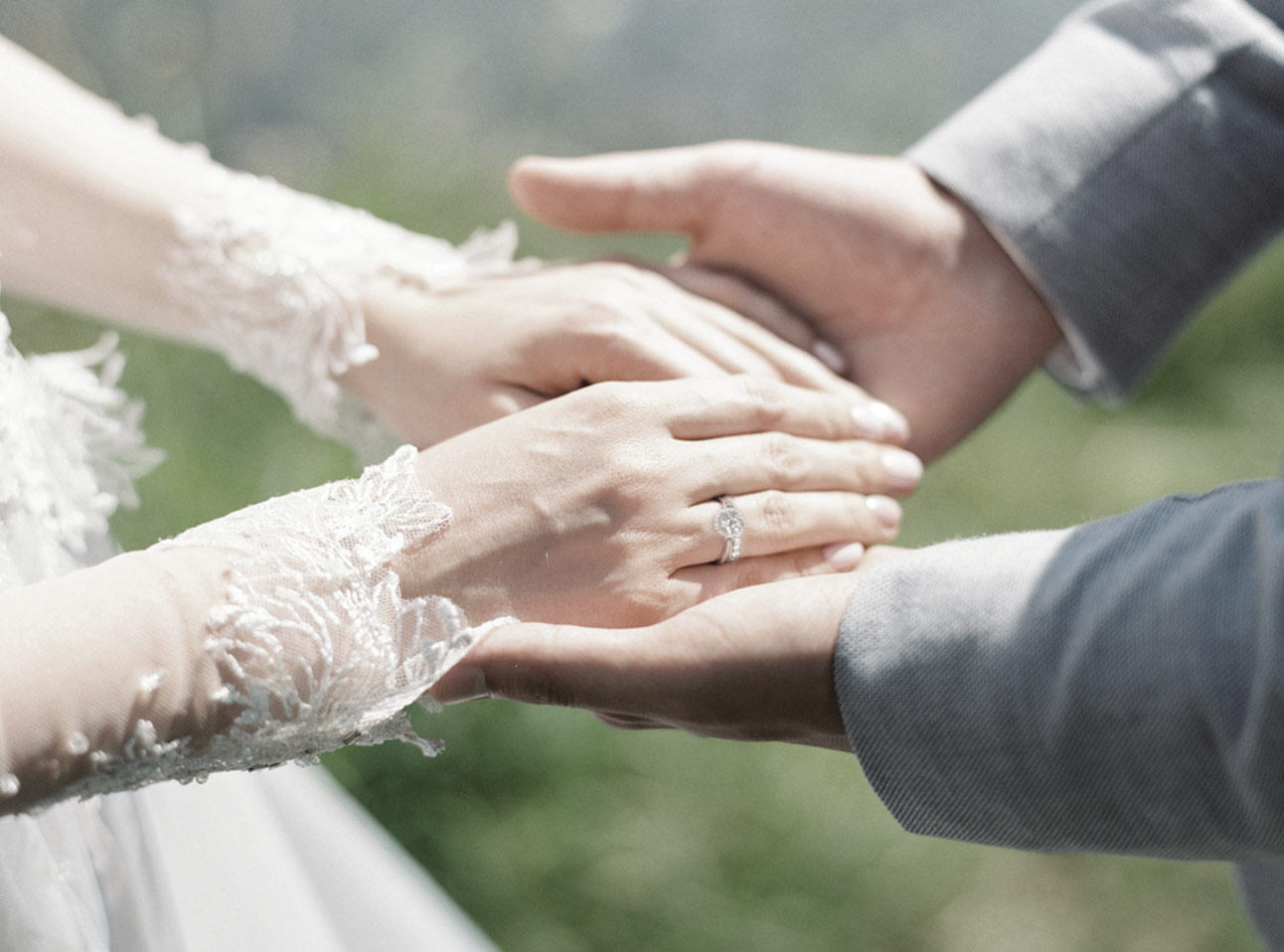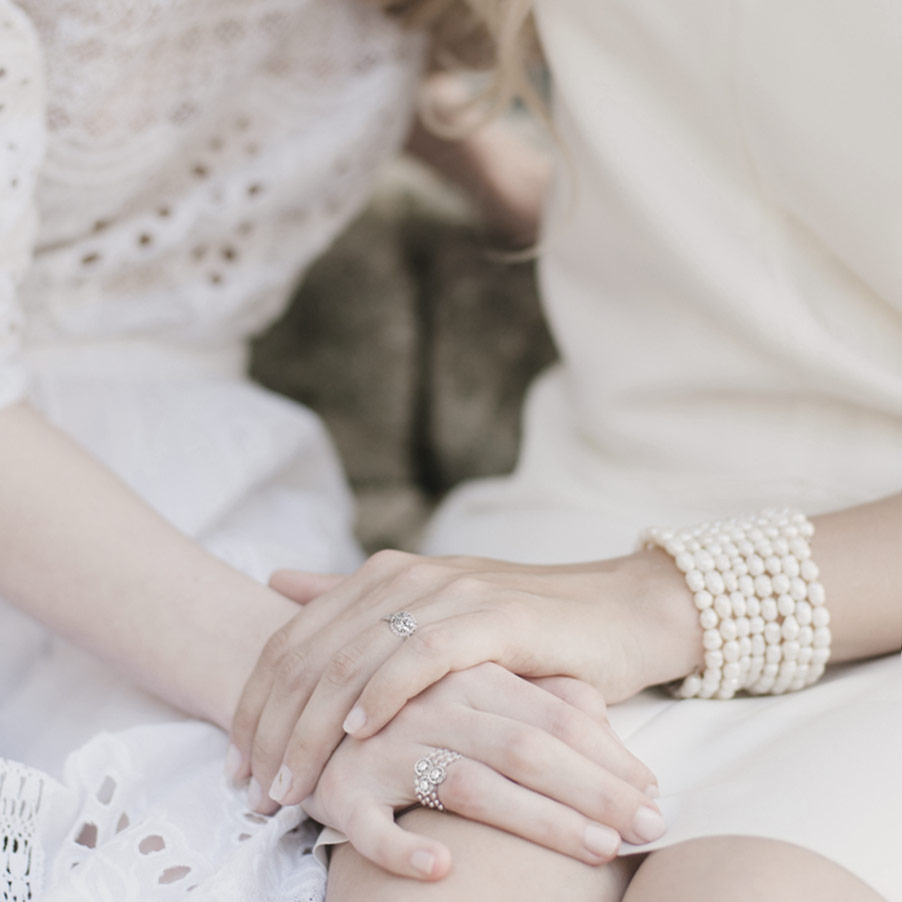The right hand is typically the dominant hand. This means that if you are right-handed, you will wear your wedding band on your right hand. If you are left-handed, however, you should wear the wedding band on the left hand.
The reason for this is because most people are right-handed and use their right hands more often than their left hands. This means that the ring will get more wear on the right hand than it would if it were worn on the left hand.
This also means that if you’re a lefty who wants to wear your wedding band on your right hand, it might be best to have an extra band made up so that you can switch back and forth between hands as needed throughout the day!
Throughout the U.S. and many other parts of the world, most women wear their wedding bands on the same finger — the left-hand ring finger. Have you ever wondered why, or where this tradition comes from? Do brides and married women have to wear it on that finger? Keep reading to learn more about the tradition behind the left ring finger and what it represents.
Why Wear a Wedding Band on the Left-Hand Ring Finger?

The ring finger is the fourth finger on the hand, and most brides wear their engagement and wedding bands on that finger of the left hand. However, it’s not the same in all cultures and countries. In parts of Europe, women wear their wedding jewelry on the right-hand ring finger instead. In certain cultures, the right hand is used as part of the physical representation of entry into other vows and oaths, which is why these cultures may also use the right hand for their wedding bands.
Some believe that the ring is worn on the ring finger of either hand because that particular digit has a vein that runs directly to the heart. This legend stems from the early Romans, who had a legend that referred to the vein as the Vena Amoris, or vein of love. As a result, the ring finger became a meaningful representation of the two hearts of the people being married and their love for each other.
Our modern-day understanding of biology and human anatomy shows that all your fingers have veins that connect to the heart. Yet the ring finger remains as one of the most popular locations for wedding and engagement bands.
History of Wedding Bands
As mentioned, wedding bands date back many centuries, with proof that the Romans used rings to signify the pledge made between two people as they entered into the marriage covenant. The endless circular shape indicates the eternal nature of the union, while the open center of the ring can serve as a visual representation of the portal to the new life the couple will enter into together.
Early Romans and Greeks typically gave and wore rings made of ivory, bone, or leather, as gold and silver were available only to the very wealthy. In some areas, rings were made of iron, other metals, or other similar materials. During the era of the Byzantine Empire, the betrothed couple would personalize the rings to give to one another with engravings of their figures. When Christianity spread across the empire, the figure engravings were replaced with images of Jesus Christ or the cross, which was believed to bless the union.
In some religions and cultures, women never marry but rather remain committed to their relationship with their deity. In this case, a commitment or symbolic marriage to God is represented with a ring worn on the right-hand ring finger. Other cultures wear the wedding ring on the thumb, although this isn’t very common today.
The gimmel or fede ring features two hands clasped together, also known as the Claddagh ring. Some couples choose this style of ring for their engagement or wedding ceremony to indicate their union, although it can also represent friendship or sisterhood. The coronation style of wedding ring was first created for William IV in 1831, who wore it to his coronation ceremony. Elizabeth II later wore the ring, which featured a large sapphire surrounded by a cross of diamonds and rubies.
In the past, the wedding ring was the common symbol of marriage and commitment to one another, but the engagement ring has since surpassed it as the more iconic of the two. Many women have a flashier engagement ring, often with one or multiple gemstones, and a simpler wedding band. Some women have foregone a wedding band and only wear their engagement ring, even after the marriage has taken place.
While a diamond is the most common featured stone in an engagement or wedding band, that was not always the case. In fact, the “Diamond is Forever” campaign launched by de Beers in the mid-20th century pushed the diamond to the center of the wedding jewelry market, making this stone the most popular for an engagement ring setting. 
Stacking Bands
If you do wear both an engagement ring and one or more wedding bands, you may wonder how to position or stack them on your ring finger. Married couples often wear their wedding bands closest to their hearts, or on the inside of the engagement band, but there is no hard rule about stacking. You may receive another band for an anniversary in the future, or you could choose to stack multiple rings to represent your union. Some women even choose to have their rings soldered together into one piece, so the individual rings don’t twist separately from one another.
Wearing Other Rings on the Ring Finger
Wondering whether you can or should wear rings other than wedding jewelry on the left-hand ring finger? The short answer is: Go ahead! Just be aware that in most cultures, wearing a ring on this finger indicates that you’re in a committed relationship with another person. If you’re on the dating scene, you may not have as much luck, since those you meet may assume you’re in a relationship when they see a ring on that finger. An old wives’ tale also denotes that wearing any other type of ring on your finger is bad luck, but if you’re not superstitious, you don’t need to worry about it.
Should You Wear Your Rings All the Time?
Some women wear their rings all the time and never remove them, but this can create some physical issues. Finger swelling due to physical changes or temperature swings can make it difficult to get the rings off, while sleeping with rings on can cause damage to the jewelry. It’s best to remove your rings at night and give your fingers a break as you rest.
Shopping for a new ring for yourself or a special someone? At Martin Busch Jewelers, we have a large selection of beautiful engagement and wedding bands, as well as the option to create your own custom piece.
Which finger should I wear my engagement ring on?
Diamond engagement rings have been exchanged as part of wedding traditions for hundreds of years. They’ve become universally recognised as symbols of promise, devotion and everlasting love – A Diamond Is Forever. But on which hand and finger should your engagement and wedding rings be worn, and how are they worn around the world?
“Will you marry me?” –
Your engagement ring finger
With all the flutter and excitement of an engagement, you may ask: What is the correct hand and finger to wear my engagement ring on?
In many Western countries, the tradition of wearing an engagement ring on the fourth finger on the left hand, (the left ring finger on the ring finger guide below), can be traced back to the Ancient Romans. They believed this finger had a vein that ran directly to the heart, the Vena Amoris, meaning ‘vein of love’. With the heart at the centre of your emotions, this was thought to be the best finger to wear your engagement ring on. It showed to all the symbol of your Forever love and that your heart had been claimed by another.
The Ancient Romans believed that the fourth finger on the left hand had a vein that ran directly to the heart, the Vena Amoris, meaning ‘vein of love’.
Wearing your engagement ring on the left hand is not a global tradition. In Russia, Germany, Norway and India, engagement rings are worn on the right hand. This derives from ‘left’, in latin, meaning ‘sinister’. Therefore, the left hand was considered unlucky by some.
In Sweden and Chile, it is not just brides-to-be that receive engagement rings, men wear them too. In Chile, these are worn on the right hand until marriage, when they are exchanged onto the left.
It is not just engagement rings that are exchanged as a mark of an upcoming wedding ceremony. Traditionally in China, money and other goods are exchanged instead of engagement rings.
In Northern Kenya, the Samburu warriors wear ornate beadings around their neck, with certain colours used to indicate engagement.
“I do” –
Your wedding ring finger
The engagement ring symbolises a promise of marriage and your wedding band solidifies this promise. With no beginning or end, the circle of a wedding ring is considered a symbol of eternity and dedication to a lifetime partnership.
In Western cultures, traditionally wedding rings are exchanged during a couple’s wedding ceremony, on the engagement ring finger. With this, you may wonder what happens to your engagement ring? Just before the wedding ceremony, the engagement ring is exchanged onto the right hand so the wedding ring can be placed onto the left hand, to be worn closest to the heart. After the ceremony, the engagement ring is then placed on top of the new wedding band.



Although this is the traditional way of pairing rings, couples are now choosing different ways to style them. From wearing the wedding ring on top of the engagement ring, to joining the two rings together so they become one. Regardless of how you choose to wear them, you should always ensure that both your rings are comfortable and sized properly.
Around the world, it is not just wedding bands that are exchanged at ceremonies. In customary Indian weddings during the Var Mala Ceremony, the bride and groom place beautiful flower garlands around each other’s necks. This is to show the bride has accepted the groom as her husband. It is not just fingers that wedding rings are worn on. In traditional Hindu cultures women wear toe rings, known as bichiya.
Ring finger guide
A love to last a lifetime
Whether you wear your diamond engagement ring and wedding band on your right hand or left, your index finger or thumb, your ring finger is not what matters. More than just beautiful pieces of jewellery, your engagement and wedding rings symbolise a promise of your commitment to one another, your future experiences and your union together. They are an unwavering symbol of your love, now and Forever.



